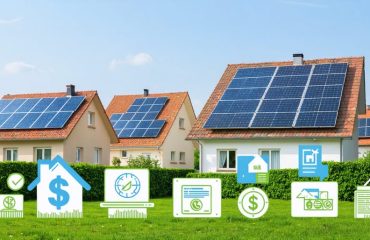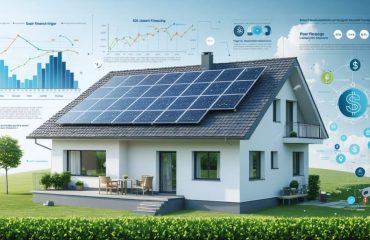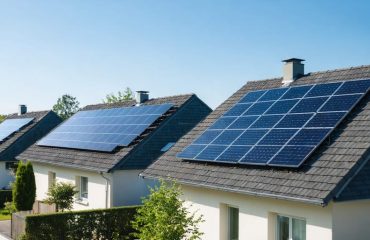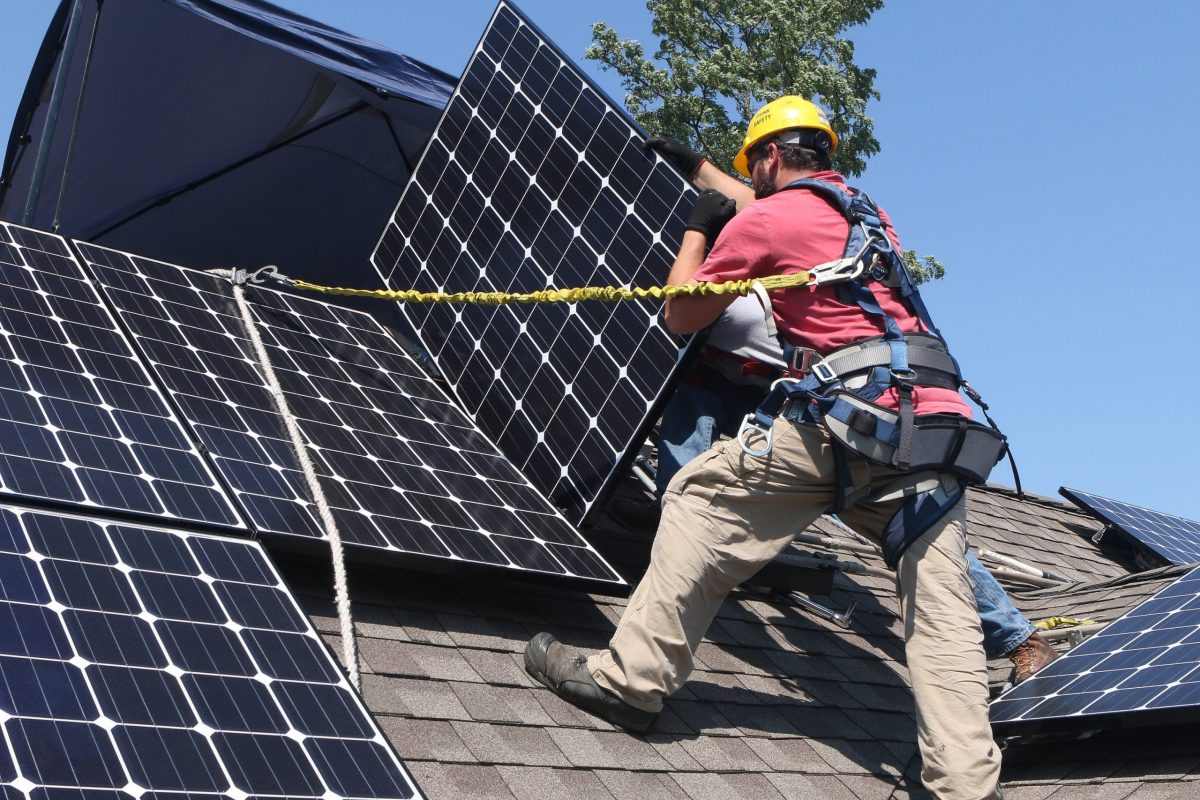Understand that solar variability refers to two distinct concepts: the sun’s energy output reaching your roof and the dramatic price differences between regions for installing panels. When you search solar costs online, you’ll see quotes ranging from $15,000 to $40,000 for similar-sized systems—this isn’t about how sunny your area is, but rather local labor rates, permitting fees, utility incentives, and market competition.
Stop worrying whether your region gets enough sunlight. Germany leads much of the world in solar adoption despite having less annual sunshine than Alaska. What matters is your electricity rate, available incentives, and installation costs. Even cloudy regions generate sufficient energy to provide meaningful bill savings when the economics align properly.
Focus on your local total cost after incentives rather than sticker price. A $30,000 system in a high-cost area with generous rebates often delivers better returns than a $20,000 system elsewhere with minimal incentives. Your neighbor’s installation cost tells you almost nothing about what you’ll pay—regional installer competition, roof complexity, and timing affect your final number significantly.
Request quotes from at least three local installers to understand your area’s true pricing landscape. This comparison reveals whether you’re in a competitive market with reasonable rates or a region where limited installer options inflate costs. Solar variability in pricing reflects local market conditions you can navigate with informed shopping, not limitations of the technology itself.
What Solar Variability Really Means for Your Wallet
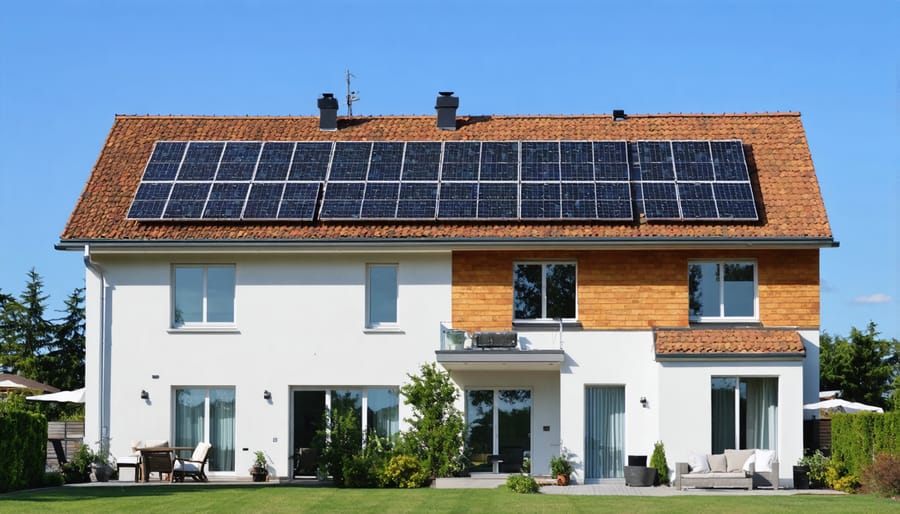
Solar Resource vs. Solar Cost: Two Different Things
Here’s an important distinction: solar resource availability and solar installation costs are completely separate factors. Just because your state gets abundant sunshine doesn’t automatically mean you’ll pay less to install panels, and conversely, cloudier regions don’t necessarily charge more.
The solar resource refers to how much sunlight hits your roof throughout the year. This affects how much energy your system will generate. Solar costs, however, are determined by market competition, local labor rates, permitting fees, available incentives, and installation demand in your area. That’s why installation costs vary significantly even between neighboring states with similar weather patterns.
For example, Massachusetts has relatively modest sunshine compared to Arizona, yet both states have thriving solar markets with competitive pricing. Meanwhile, some sunny Southern states may have higher installation costs due to fewer installers or less competitive markets. The good news? Understanding this difference helps you focus on what matters: finding quality installers with fair pricing in your area, regardless of your local climate.
The Five Factors That Change Your Solar Costs By Region
Local Labor Costs and Installation Expertise
The availability of qualified solar installers in your area directly affects what you’ll pay for your system. In competitive markets with multiple established installers, prices tend to be lower as companies vie for your business. Rural or less populated regions may have fewer options, which can drive costs up since there’s less competitive pressure.
Labor rates also vary significantly by location. Cities with higher costs of living typically see higher installation fees because contractors need to pay their teams accordingly. However, these same areas often have more experienced installers who can complete your project efficiently, potentially offsetting some of those higher hourly rates.
The good news? More installers are expanding their service areas as solar becomes mainstream, bringing competition and expertise to previously underserved regions. When getting quotes, ask about the company’s experience specifically with your roof type and local building codes. An installer familiar with your area’s permitting process can save you time and headaches, making them worth their fee even if they’re not the absolute cheapest option available.
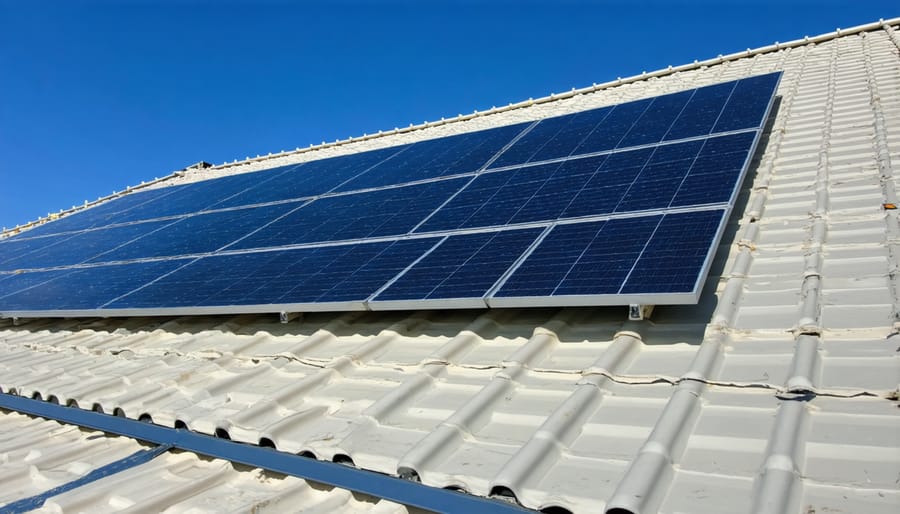
State and Local Incentives (Where Money Meets Sunshine)
Here’s where solar savings get really exciting. Your state and local governments often offer financial incentives that can slash your installation costs by thousands of dollars. These tax credits and rebates vary dramatically depending on where you live, creating huge price differences between neighboring states.
For example, a homeowner in Massachusetts might receive state rebates plus local utility incentives totaling $8,000, while someone in a neighboring state gets nothing beyond federal credits. Some regions offer performance-based incentives that pay you for the energy your system produces. Others provide property tax exemptions, meaning your home’s increased value won’t raise your taxes.
The best part? These programs stack with federal incentives, multiplying your savings. Cities with ambitious clean energy goals often offer the most generous packages, sometimes covering 40-50% of total costs. Before shopping for panels, research your specific location’s programs. Your zip code might hold thousands of dollars in hidden savings waiting to be claimed.
Permitting and Regulatory Requirements
The paperwork side of solar installation varies dramatically by location and can add hundreds to thousands of dollars to your project. Some cities offer streamlined permitting processes with fees under $200, while others require multiple inspections and permits that can cost $1,500 or more.
Your local government determines building permit fees, electrical permits, and how many inspection visits are required. Progressive solar-friendly communities often have expedited solar permit tracks that reduce wait times and costs. Other areas may require additional fire department reviews or homeowner association approvals that extend timelines and expenses.
Interconnection fees—what your utility charges to connect your system to the grid—also differ widely. Some utilities process applications quickly at minimal cost, while others impose higher fees and lengthy approval periods.
The good news: many states now have laws limiting excessive permitting costs and standardizing requirements. Your solar installer handles most paperwork, but understanding these regional differences helps explain price variations. When comparing quotes, ask installers to break down permit and inspection costs separately so you can see exactly what your local requirements add to the bottom line.
Your Local Electricity Rates
Your local electricity rates play a surprisingly large role in determining how much you’ll save with solar panels. If you’re paying 15 cents per kilowatt-hour versus someone paying 25 cents, that second homeowner will recoup their solar investment much faster, even with identical sunlight conditions.
States like California, Hawaii, and Massachusetts have higher electricity costs, making solar particularly attractive there. Every kilowatt-hour your panels generate saves you more money when rates are higher. This explains why you’ll find robust solar markets in places that aren’t always sunny. The financial equation simply works better when you’re offsetting expensive grid electricity.
Before deciding on solar, check your current electricity bill to understand your per-kilowatt-hour rate and monthly usage patterns. These numbers help you calculate your specific savings potential. Even in regions with moderate sunlight, high electricity rates can make solar panels an excellent investment for your home.
Climate and Installation Complexity
Your roof’s characteristics significantly influence installation costs. Complex roof designs with multiple angles, dormers, or unusual materials require more labor and specialized mounting equipment, increasing your total investment. Steeper roofs also demand additional safety measures and expertise. Metal roofs typically allow easier installations compared to tile or slate, which need extra care to prevent damage.
Regional weather patterns affect installation scheduling and preparation requirements. Areas with frequent rain, snow, or extreme temperatures may require seasonal planning or weatherproofing measures that add to project costs. However, this doesn’t mean challenging climates can’t support solar – panels actually perform efficiently in cooler temperatures.
Local architectural styles also play a role. Historic districts or homeowner associations might require specific aesthetic accommodations or additional permits, adding complexity to your project. Some regions have building codes requiring enhanced wind or snow load ratings for solar equipment, particularly in hurricane or heavy snowfall zones. Understanding these regional factors helps you budget accurately and avoid surprise expenses during installation.
How Much Sun Your Region Gets (And Why It’s Not Everything)
The Myth About Needing Perfect Sunshine
Here’s a common worry we hear all the time: “I live in a cloudy area, so solar won’t work for me.” This misconception stops many homeowners from exploring solar, but it’s simply not true. Germany, a country with weather comparable to Alaska, leads Europe in solar energy production. Meanwhile, Massachusetts and New York rank among the top U.S. states for solar installations despite their notoriously gray winters.
Solar panels don’t need blazing sunshine to generate electricity—they work with daylight. Modern panels are incredibly efficient at capturing diffuse light, even on overcast days. In fact, panels can sometimes perform better in cooler, cloudy conditions since extreme heat can reduce their efficiency.
The real game-changer isn’t your local weather—it’s the economics. States with cloudy climates often have higher electricity rates, making solar savings more substantial. When you’re offsetting expensive grid power, your panels pay for themselves faster. Additionally, many cloudy regions offer generous incentives and net metering programs that boost your return on investment. Don’t let a few rainy days convince you that solar isn’t worthwhile. Focus instead on your electricity costs and available incentives—those factors matter far more than sunshine hours.
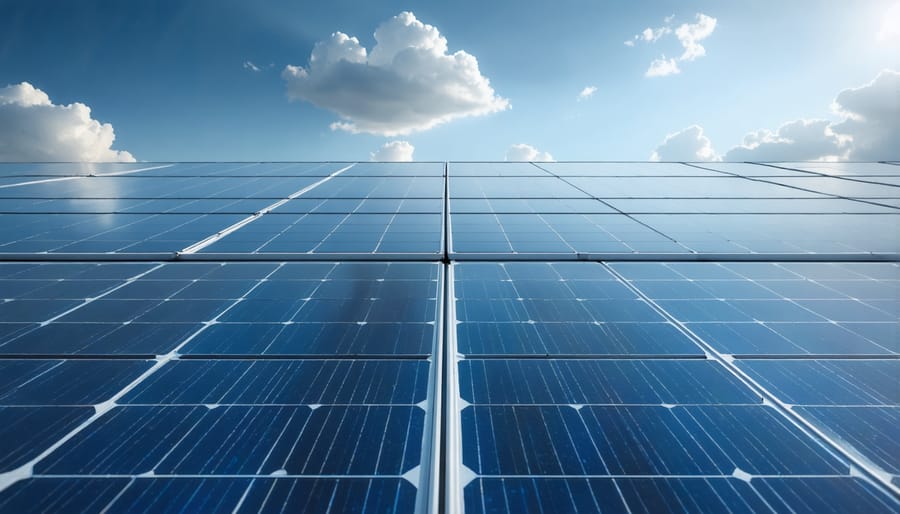
What This Means When You’re Shopping for Solar
Questions to Ask Your Installer About Regional Factors
Before committing to the solar installation process, arm yourself with these essential questions for installers:
What state and local incentives am I eligible for beyond federal tax credits? Many regions offer rebates or performance payments that significantly reduce your upfront costs.
What’s the typical payback period for systems in my area? This reveals how local electricity rates and sunshine patterns affect your timeline to savings.
Do you have references from neighbors with similar roof orientations? Real-world performance data from your immediate area provides the most accurate expectations.
How does my shading situation compare to other local installations you’ve completed? Every property is unique, but local experience helps identify potential issues early.
What financing options work best for homeowners in this region? Some lenders specialize in certain markets with better terms.
Are there upcoming policy changes I should know about? Installers often have insider knowledge about expiring incentives or new programs launching soon.
Understanding how solar variability affects your region is the first step toward making a smart, confident investment in renewable energy. The good news? Solar technology works remarkably well across diverse climates and locations when you have the right information and local expertise on your side. Whether you live in a sun-drenched desert or a cloudier northern state, solar panels can generate meaningful savings and environmental benefits for your home.
The key is knowing what factors matter most in your area—from local incentives and installation costs to seasonal sunlight patterns and utility rates. Armed with this knowledge, you can cut through the noise, avoid overpaying, and find a system tailored to your specific circumstances. Remember, millions of homeowners in varied climates are already enjoying lower energy bills and reduced carbon footprints thanks to solar power.
Ready to discover what solar can do for you? Take the next step by researching your state’s incentives, getting quotes from reputable local installers, and calculating your potential savings. Your region has unique advantages waiting to be unlocked—start exploring them today and join the growing community of homeowners powering their lives with clean, affordable energy.


